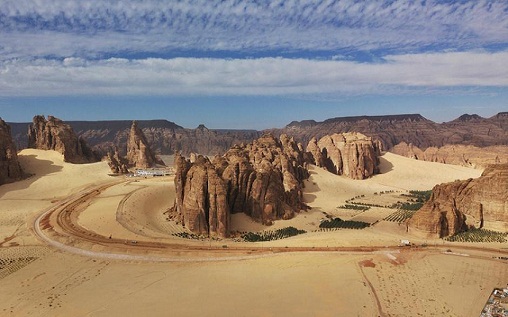Saudi Arabia’s endeavours to spotlight its ancient heritage received a boost on Thursday, after the publication of a detailed study on mysterious 7,000 year old structures which can be found in the Al Ula region.
The rectangular structures are built from basalt stone and are more than 2,000 years older than Egypt’s pyramids.
The news of the discovery was published in the Antiquity Journal.
Al Ula governorate lies on the old “Incense Road” trade route, which flourished in the seventh century, but human settlements there date back far earlier.
Al Ula includes the remains of a 2,000-year-old walled city built by early Bedouin settlers, the kingdom’s first Unesco World Heritage Site.
“We are talking about over 1,000 mustatils,” said Melissa Kennedy, an archaeologist at the University of Western Australia in Perth, to media.
“Mustatil” is the Arabic for “rectangle” and is the common term for the structures found in the area.
“These things are found over 200,000 square kilometres, and they’re all very similar in shape … so perhaps it’s the same ritual belief or understanding,” she said.
While some of the long rectangular structures were made simply by building low stone walls, others are more complex and involved internal rooms and pillars.
One site involved the use of 12,000 tonnes of rock, Ms Kennedy said.
Ms Kennedy’s team say the smaller rooms within the larger structures might have been used to sacrifice animals after 5,000 year old animal bones were found at one site in 2019.
The narrow rectangular shapes could also have been built for some kind of ceremonial procession.
Saudi Arabia’s Royal Commission for Al Ula funded the research of the team from Perth University.
The kingdom is trying to raise international awareness of the country’s ancient heritage, part of a wider drive to attract tourists as part of the Vision 2030 strategy.
Some of the country’s most notable achievements of Vision 2030’s first five years include a rise in the number of heritage sites open to visitors, from 241 in 2017 to 354 in 2020, according to the Saudi government.

